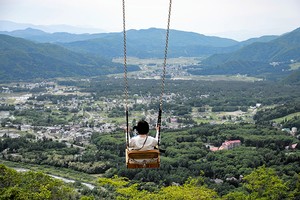THE ASAHI SHIMBUN
May 6, 2021 at 19:09 JST
The governors of four densely populated areas asked the central government to extend the COVID-19 state of emergency until the end of May because they are still struggling to contain the novel coronavirus.
The latest state of emergency, declared in Tokyo, Osaka, Kyoto and Hyogo prefectures, is set to expire on May 11.
The Osaka prefectural government at a May 6 meeting formally decided to ask the central government to keep the state of emergency in place. The request was made together with the neighboring prefectures of Hyogo and Kyoto.
At the meeting, Osaka Governor Hirofumi Yoshimura said an extension was unavoidable since the prefecture’s medical care situation had “reached its limit.”
Tokyo Governor Yuriko Koike also said on May 6 that an extension for the capital was necessary. After a meeting the same day of the metropolitan government panel overseeing the pandemic, Koike told reporters that the state of emergency could not be lifted as planned on May 11.
She later consulted through a video conference with her counterparts in the three neighboring prefectures of Kanagawa, Saitama and Chiba. They reached a consensus that the state of emergency for the capital and pre-emergency measures for the three neighboring prefectures should be extended until May 31.
Koike also said requests for a wide range of businesses to close during the state of emergency would continue.
Prime Minister Yoshihide Suga and relevant Cabinet ministers were to meet on May 6 to discuss extending the state of emergency as well as whether to approve pre-emergency measures for Hokkaido and Fukuoka Prefecture, where infections have been rising in recent days.
After a Cabinet meeting on May 5, Suga told reporters that a decision on continuing the state of emergency would be made this week.
He added that he felt the effects from measures taken under the state of emergency to control the flow of people were beginning to appear.
Some central government officials are concerned about the negative effects on the economy from requests to a wide range of businesses to close their doors during the state of emergency. A major point of the ministerial discussions will be whether to maintain the current measures or relax some requests.
The third state of emergency began on April 25 and was initially set for a 17-day period. Experts and prefectural governors said the period was too short to control the spread of infections.
The first two states of emergency, issued in April 2020 and January this year, were each initially set for one month. Both times, the period had to be extended.




















A peek through the music industry’s curtain at the producers who harnessed social media to help their idols go global.
A series based on diplomatic documents declassified by Japan’s Foreign Ministry
Here is a collection of first-hand accounts by “hibakusha” atomic bomb survivors.
Cooking experts, chefs and others involved in the field of food introduce their special recipes intertwined with their paths in life.
A series about Japanese-Americans and their memories of World War II